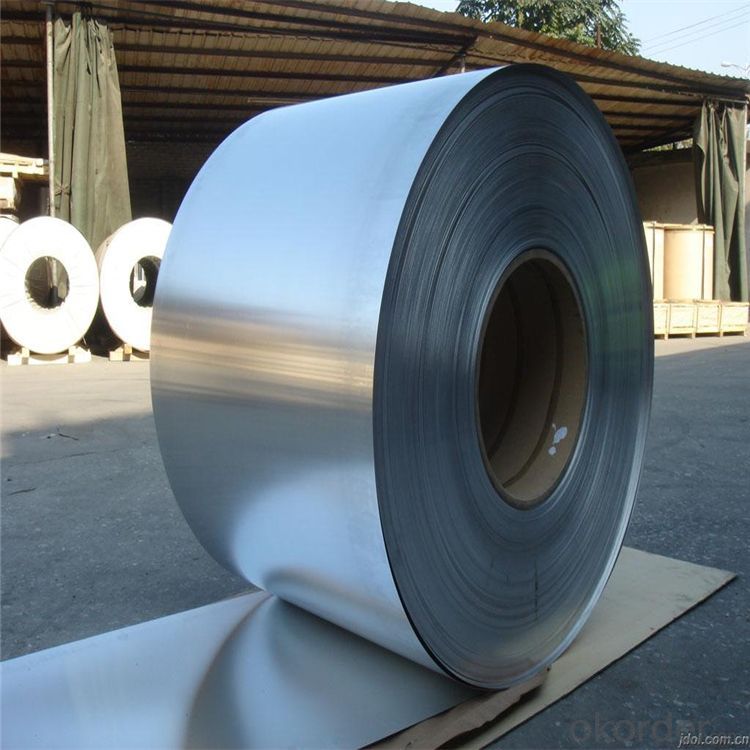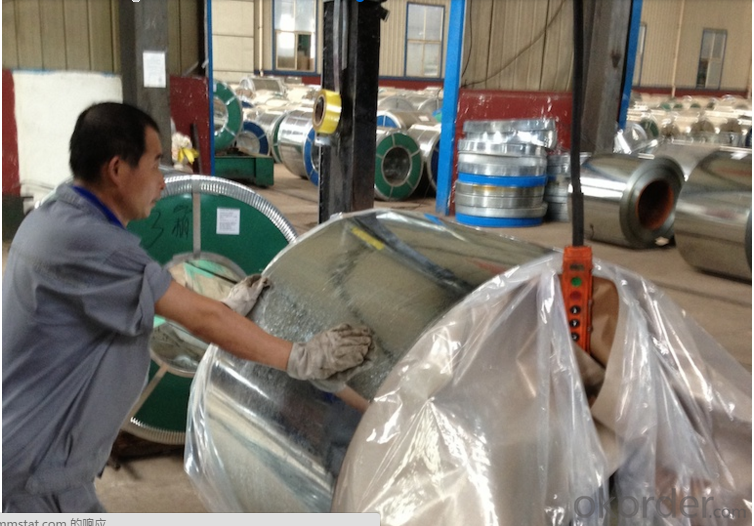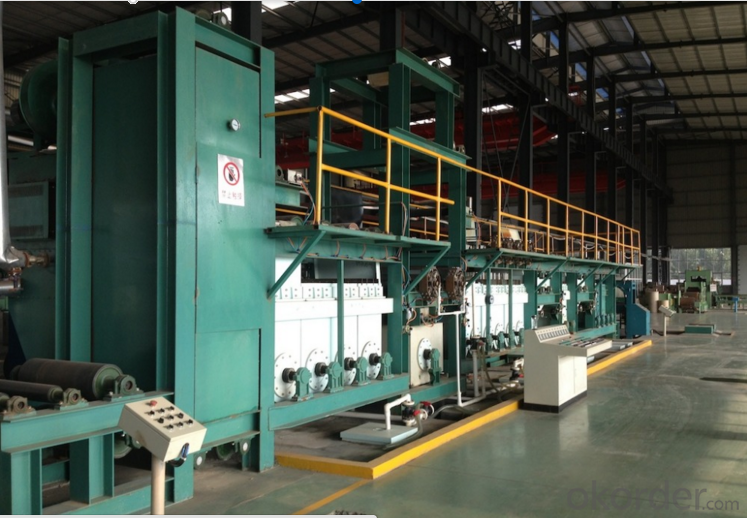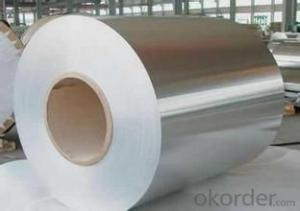Hot rolled galvanized stainless steel coil in china
- Loading Port:
- Tianjin
- Payment Terms:
- TT OR LC
- Min Order Qty:
- 50 m.t.
- Supply Capability:
- 5000 m.t./month
OKorder Service Pledge
OKorder Financial Service
You Might Also Like
Item specifice
Bers | 201,202,304,304L,309S,310S,316,316L,316Ti,317L,321,347H,409,409L,410,420, 430,etc. |
Brand | TISCO ,BAO STEEL,POSCO,JISCO,LISCO. |
Certification | ISO,SGS,BV. |
Thickness | 0.3mm-60mm. |
Width | 1000mm,1219mm(4feet),1250mm,1500mm,1524mm(5feet), |
Length | 2000mm,2440mm(8feet),2500mm,3000mm,3048mm(10feet), |
Surface | NO.1, NO.2, 2B, BA, NO.4, 8K. |
Standard | ASTM,AISI,SUS,JIS,EN,DIN,BS,GB,etc. |
Delivery time | 5-15 days after confirming the order. |
MOQ | 1 ton |
Package | Bundles, seaworthy wooden cases. With or without edge protector, steel hoop and seals, or as per customers' requirements. The inner size of container is below: |
Payment term | L/C at sight or 30% TT as deposit and the balance paid against copy of B/L. |
Applications | architectural decoration, luxury doors, elevators decorating, metal tank shell, ship building, decorated inside the train, as well as outdoor works, advertising nameplate, the ceiling and cabinets, aisle panels, screen, the tunnel project, hotels, guest houses, entertainment place, kitchen equipment, light industrial and others. |
Advantages | Showing the splendor of your quality, wear-resistant as well, strong corrosion resistance and decorative effect, durable and beautiful in good taste. |
Pictures for stainless steel coil :



- Q:What are the different coil slitting methods used for steel coils?
- There are several coil slitting methods commonly used for steel coils. These methods are employed to cut larger steel coils into smaller, narrower coils that are suitable for specific applications. 1. Blade Slitting: This is the most common method used for coil slitting. It involves using circular knives or blades to cut the steel coil into narrower strips. The blades are set at predetermined distances and are usually mounted on a rotating shaft. The coil is passed through the blades, and the circular motion of the blades slices through the coil, creating the desired narrower strips. 2. Rotary Shear Slitting: In this method, two sets of rotary shear knives are used to cut the steel coil. The upper and lower sets of knives rotate in opposite directions, creating a scissor-like cutting action. The coil is passed through the shearing blades, and the sharp edges of the knives slice through the coil, producing the desired narrower strips. 3. Sliding Shear Slitting: Sliding shear slitting is another method used for coil slitting. In this method, a stationary upper knife and a moving lower knife are used to cut the coil. The lower knife moves back and forth across the coil, while the upper knife remains stationary. The coil is passed through the moving knife, which cuts it into narrower strips. 4. Crush Slitting: Crush slitting is a less common method used for coil slitting. In this method, the steel coil is passed through a set of rollers equipped with blades. The blades are not sharp, but the pressure exerted by the rollers crushes and fractures the coil, creating the desired narrower strips. 5. Laser Slitting: Laser slitting is a modern and precise method used for coil slitting. It involves using a laser beam to cut through the steel coil. The laser beam is directed onto the coil, and its high intensity melts and vaporizes the steel, creating a narrow slit. Laser slitting offers high accuracy and a clean cut, making it suitable for specialized applications. Each of these coil slitting methods has its advantages and limitations, and the choice of method depends on factors such as the type of steel, desired strip width, production volume, and required precision. Manufacturers select the most appropriate method based on their specific requirements and the properties of the steel coils they are processing.
- Q:How are steel coils used in the manufacturing of suspension springs?
- Steel coils are used in the manufacturing of suspension springs as they are wound into a specific shape and size to provide the necessary flexibility and resilience required to absorb shocks and vibrations in a vehicle's suspension system. The coils are designed to support the weight of the vehicle and provide a smooth and comfortable ride by compressing and expanding as the vehicle moves over uneven surfaces.
- Q:What are the different methods of blanking steel coils?
- There are several methods for blanking steel coils, including shearing, laser cutting, and waterjet cutting. Shearing involves using sharp blades to cut the coil into desired shapes. Laser cutting utilizes a high-powered laser beam to accurately cut through the steel. Waterjet cutting involves the use of a high-pressure stream of water mixed with abrasive materials to cut the coil. These methods offer different levels of precision, speed, and cost-effectiveness depending on the specific requirements of the blanking process.
- Q:How are steel coils used in the production of steel connectors?
- Steel coils are used in the production of steel connectors by being fed into a machine where they are unwound and straightened. The straightened steel is then cut into appropriate lengths and shaped into the desired connector form. This process helps ensure consistency, strength, and efficiency in manufacturing steel connectors.
- Q:What are the dimensions of steel coils used in the metal furniture industry?
- Steel coils used in the metal furniture industry come in varying dimensions, depending on the specific requirements of each manufacturer. Commonly used dimensions include coil widths that range from 24 to 60 inches (61 to 152 cm) and coil diameters that range from 36 to 72 inches (91 to 183 cm). The thickness of the steel coils can also vary, typically falling between 0.020 and 0.250 inches (0.05 to 0.64 cm). These dimensions enable manufacturers to efficiently produce a variety of metal furniture, such as chairs, tables, and cabinets, by utilizing the steel coils as raw materials in their production processes.
- Q:I don't know it is low alloy steel or high allow steel or medium carbon steel
- It is a high alloy steel. Look at all the elements in it's name for it's composition: 30% Chromium and Nickel 8% Molybdenum Sounds like a very tough stainless tool steel for cutting rock or something. Chromium and nickel arre the two elements they use to make stainless steel and molybdenum is used to make steel very hard and wear resistant
- Q:Are steel coils used in furniture manufacturing?
- Yes, steel coils are commonly used in furniture manufacturing for various purposes such as providing support and stability to seating structures, enhancing durability, and ensuring proper weight distribution.
- Q:How are steel coils inspected for thickness?
- Steel coils are inspected for thickness using various methods to ensure their quality and compliance with industry standards. One common method is using a non-contact laser measurement system. In this process, a laser beam is directed towards the surface of the steel coil, and the time it takes for the beam to reflect back is measured. By accurately calculating the time taken, the thickness of the steel coil can be determined. Another method involves using ultrasonic technology. Ultrasonic sensors are used to emit high-frequency sound waves that penetrate the coil. These sound waves bounce back differently depending on the thickness of the steel, allowing the sensors to measure the thickness accurately. Additionally, some manufacturers may opt for an eddy current testing method. This technique involves passing an alternating current through a coil, creating a magnetic field. The thickness of the steel coil affects the impedance of the coil, which can be measured. By analyzing the changes in impedance, the thickness of the steel coil can be evaluated. Furthermore, some companies employ a mechanical method called the caliper method. This method involves using a caliper gauge to physically measure the thickness of the steel coil by applying pressure to the coil and reading the measurement on the caliper. Regardless of the method used, it is crucial for steel coils to be inspected for thickness to ensure they meet the required specifications and provide the desired performance in various applications.
- Q:like the steel industry and the effects it had on industrial growth, 10 points!
- The single most important important advance in steel production was learning to accurately control carbon content. This was done through the Bessemer Process in which air was blown through molten iron to burn out impurities and excess carbon. Low carbon iron (wrought iron) could be easily worked into shapes. Medium carbon iron could be cast into useful and durable shapes. High carbon steel could be used for structural uses (beams and girders). Adding alloys such as nickel and silicon could produce very tough steels and steels resistant to rust. Adding vanadium to steel engine parts allowed Ford to produce finely machined engines in huge numbers with existing machinery.
- Q:What are the different methods of steel coil surface cleaning?
- There are several different methods of steel coil surface cleaning, including mechanical cleaning, chemical cleaning, and high-pressure water cleaning. Mechanical cleaning involves using abrasive materials or brushes to remove dirt, rust, and other contaminants from the surface of the steel coil. Chemical cleaning involves using chemicals or solvents to dissolve or remove contaminants from the surface. High-pressure water cleaning uses water jets at high pressures to remove dirt and debris from the surface. Each method has its own advantages and is chosen based on the specific requirements and condition of the steel coil.
1. Manufacturer Overview |
|
|---|---|
| Location | |
| Year Established | |
| Annual Output Value | |
| Main Markets | |
| Company Certifications | |
2. Manufacturer Certificates |
|
|---|---|
| a) Certification Name | |
| Range | |
| Reference | |
| Validity Period | |
3. Manufacturer Capability |
|
|---|---|
| a)Trade Capacity | |
| Nearest Port | |
| Export Percentage | |
| No.of Employees in Trade Department | |
| Language Spoken: | |
| b)Factory Information | |
| Factory Size: | |
| No. of Production Lines | |
| Contract Manufacturing | |
| Product Price Range | |
Send your message to us
Hot rolled galvanized stainless steel coil in china
- Loading Port:
- Tianjin
- Payment Terms:
- TT OR LC
- Min Order Qty:
- 50 m.t.
- Supply Capability:
- 5000 m.t./month
OKorder Service Pledge
OKorder Financial Service
Similar products
New products
Hot products
Hot Searches
Related keywords




























